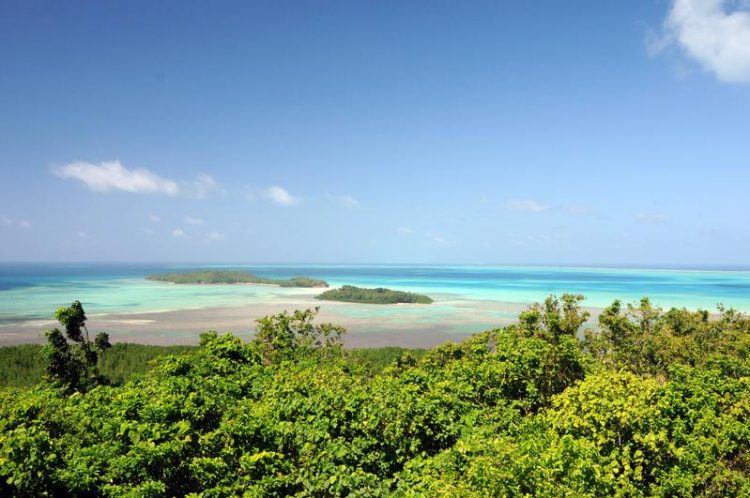ZMT-Expert supports the implementation of the ambitious marine reserve in Palau

Coral reef off Babeldaob, the largest island of Palau Photo: Sebastian Ferse, Leibniz Centre for Tropical Marine Research
On 1 January 2020, the island state of Palau implemented an unparalleled marine sanctuary in its territorial waters: the Palau National Marine Sanctuary. It is one of the largest and most ambitious marine national parks in the world.
80 % of Palau's exclusive economic zone, an area of almost 500,000 square kilometres, will no longer be accessible to fishing, while the remaining 20 % is reserved exclusively for domestic fishing.
Previously, an international team of scientists and representatives of governmental and non-governmental organizations had come together to develop a research and action plan that would serve as a guideline for the implementation of the project.
The multidisciplinary group also included experts from the international project Future Earth Coasts, whose headquarters have been located at the Leibniz Centre for Tropical Marine Research (ZMT) since 2019.
The Pacific island state of Palau lies on the northern edge of the so-called Coral Triangle, one of the world's most species-rich marine regions. Its waters have remarkably healthy marine ecosystems, hosting more than 1,300 species of fish and 700 species of coral, as well as sea turtles, mantas, seabirds, whales and sharks.
A profitable source of income for the state has so far been the sale of licences for tuna fishing. This should come to an end: “Our future is in tourism, not tuna”, President Remengesau announced.
The island state now only allows its own fleet to fish in a small area that makes up 20% of its territorial waters. A narrow strip of sea around the islands is reserved for artisanal fishing for the nutritional requirements of Palau´s inhabitants, and the huge remaining area of 500,000 km² is under nature protection.
“For its future, Palau is committed to sustainable ecotourism in the higher price segment. The increasingly rare opportunity to dive in well-preserved reefs or observe a breathtaking marine fauna is a strong tourist magnet,” explains Sebastian Ferse, Managing Director of Future Earth Coasts at ZMT and one of the consulting experts.
“The resources from its territorial waters are intended to benefit the country itself and tourism, and exports are to be minimized”.
Marine protected areas are not uncommon in the Pacific, but only a few fulfil their purpose. In most cases, there is a lack of money, personnel, or support of the authorities to enforce regulations. Locals do not feel involved in decisions and therefore do not follow the rules. Palau's National Park, on the other hand, offers reason for hope.
The local population shows a strong attachment to its unspoiled marine environment and is proud to be a fishing nation. Guided by the village elders, the clans on the islands have for centuries maintained careful resource management in their traditional fisheries. Monitoring such a large protected area is logistically challenging; it requires technology such as drones and a well-equipped motorboat flotilla. But the project does not lack international support, such as from the USA.
“Our advisory team of experts has tried to bring together all available information so that the Palauan government can make informed decisions, but also to identify uncertainties and further research needs,” says Sebastian Ferse. “This is a very ambitious initiative, and the outcome depends in part on developments that are currently difficult to predict. If the marine sanctuary is successful, it will set a signal for efforts to protect the oceans in other countries”.
Dr. Sebastian Ferse
Leibniz Centre for Tropical Marine Research
Tel: 0421 / 23800-114
Email: sebastian.ferse@leibniz-zmt.de
Media Contact
More Information:
http://www.leibniz-zmt.deAll latest news from the category: Ecology, The Environment and Conservation
This complex theme deals primarily with interactions between organisms and the environmental factors that impact them, but to a greater extent between individual inanimate environmental factors.
innovations-report offers informative reports and articles on topics such as climate protection, landscape conservation, ecological systems, wildlife and nature parks and ecosystem efficiency and balance.
Newest articles

A ‘language’ for ML models to predict nanopore properties
A large number of 2D materials like graphene can have nanopores – small holes formed by missing atoms through which foreign substances can pass. The properties of these nanopores dictate many…

Clinically validated, wearable ultrasound patch
… for continuous blood pressure monitoring. A team of researchers at the University of California San Diego has developed a new and improved wearable ultrasound patch for continuous and noninvasive…

A new puzzle piece for string theory research
Dr. Ksenia Fedosova from the Cluster of Excellence Mathematics Münster, along with an international research team, has proven a conjecture in string theory that physicists had proposed regarding certain equations….



